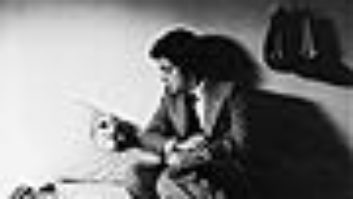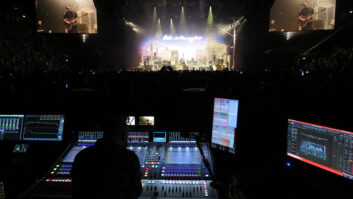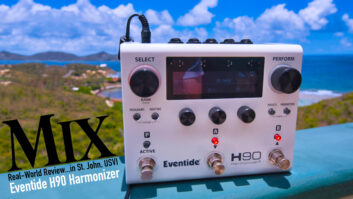
When you name a product after a Beatles tune (the model number refers to the “One After 909”), it better be good. However, when Eventide founder Richard Factor assigned his young designer Anthony Agnello (the company’s first “degreed” engineer) to begin building a harmony processor in 1974, they had no idea that they’d be creating an audio classic of their own. The version they demoed at the AES show later that year didn’t resemble the final product at all, with a music keyboard controller supported by a hand-wired box, but the reaction was universally positive, both among showgoers and Yes vocalist Jon Anderson, who tested the first prototype. Soon after (and with the keys controller offered as an option), the Harmonizer H910 was born.
Unveiled in 1975, Eventide’s H910 Harmonizer pitch shifter spawned a legacy of products that continues to this day.
“With memory for audio was just becoming possible, the H910 was the right box at the right time,” says Agnello. Offering pitch shifting (±1 octave), delay (up to 112.5 ms), feedback regeneration and more from an easy-to-use $1,600 box, the H910 was a hit—an instant studio fave and still a legacy tool years later. Users soon found all sorts of applications, ranging from regenerative arpeggios to bizarre sound design effects to lush guitar or vocal fattening. The first customer—New York City’s Channel 5—immediately put an H910 to work, downward pitch shifting “I Love Lucy” reruns that were sped up to squeeze in more commercials. “The Harmonizer could be used for good or evil,” warns Agnello, “and the speeded-up sound of Lucy’s occasional shrill shrieks was definitely evil. Taming that was a good thing.”
Artists loved the Harmonizer’s versatility. Frank Zappa put one in his guitar rack. Producer Tony Visconti used it for the memorable snare sounds on David Bowie’s Young Americans; ditto for engineer Tony Platt on AC/DC’s Back in Black. Eddie Van Halen had a pair (set to either 18-cents sharp and 18-cents flat with a 12ms delay on one side or +12c/-15c/18ms) as part of his trademark guitar sound. Tom Lord-Alge’s setup for Steve Winwood’s soulful vocals on “Back in the High Life” also employed two slightly detuned H910s (one sharp/one flat) with an 18ms spread. The twin Harmonizer effect was so popular that Eventide recreated it as the “Dual 910” program in the H3000 UltraHarmonizer that followed it a dozen years later.





